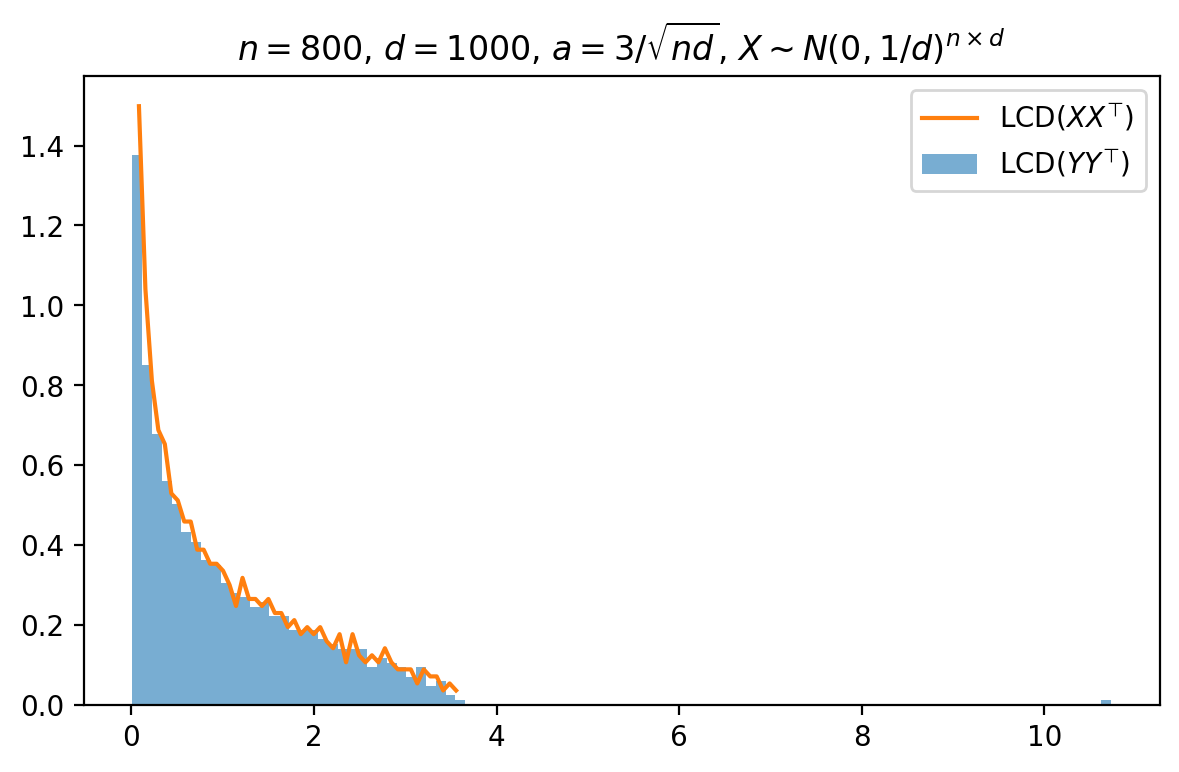A heuristic argument based on Ofer's comment
Note that $T := YY^\top = XX^\top + AX^\top +X^\top A + AA^\top$, where $A:=a 1_n 1_d^\top$ is the all-ones matrix of shape $n \times d$. Note that $AA^\top=da^21_n1_n^\top$, times a scalar $a \in \mathbb R$.
Conjecture. $\lambda_i(YY^\top) \to \lambda_i(XX^\top) + \delta_{i=1}nda^2$
I've empirically observed that the above conjecture is likely to be true. Below, I sketch some ideas which point in the direction of a possible proof.
Fact 1: $\mbox{LSD}(XX^\top + AX^\top +X^\top A + AA^\top) \to \mbox{LSD}(XX^\top + AA^\top)$, in some sense (probably weakly).
The above fact (it seems) was implied by Ofer's comment. I've observed this empirically, but I'm not quite sure why it should be true. Maybe this is a consequence of some classical / well-known lemma from free probability theory ?
Also, using a result due to G. Golub and V. Loan (see Lemma 1 of this monograph), we deduce that
Fact 2: There exist $q_1,\ldots,q_n \ge 0$ with $\sum_{i=1}^n q_i = 1$, such that $\lambda_i(XX^\top+AA^\top) = \lambda_i(XX^\top + \alpha^2d 1_n1_n^\top) = \lambda_i(XX^\top) + q_i nda^2$.
Moreover, we have the formula $q_i = \dfrac{(1_n^\top u_i)(1_n^\top v_i)}{nu_i^\top v_i}$ (provided $u_i^\top v_i \ne 0$), where $u_1,\ldots,u_n$ are the eigenvectors of $XX^\top$ and $v_1,\ldots,v_n$ are the eigenvector of $v_i$. Intuitively, one whould expect $u_i$ to be pretty much orthogonal to $v_i$ for $i \ne 1$. As a consequnce, one would expect $q \to (1,0,\ldots,0)$, in some sense.
Putting all the bits together (and of course making some of the above arguments rigorous) should prove the above claim / conjecture.

